Rockvale
Houses within 10km of this house
Displaying 50 houses.
Houses within 10km of Rockvale
Displaying 50 houses.
| House name | Description | |
|---|---|---|
| Longueville House | Longueville House was the seat of the Longfield family, built in 1720. Wilson, writing in 1786, refers to it as the seat of John Longfield. In the 1850s it was valued at £56 and held by Richard Longfield from the representatives of Charles P. Coote with a demesne of 312 acres. The Longfields sold Longueville to Senator William O'Callaghan in 1938. The Irish Tourist Association survey of the 1940s claims that the original lands were taken from the O'Callaghans after the 1641 rebellion and granted to Sir Nicholas Purdon. Longueville is now a country house hotel. |

|
| Old Dromore | Smith refers to the "pleasant seat" of Sir Matthew Deane, "lately rebuilt, with an elegant front of hewn stone". A larger house built in the early 1780s was dismantled almost as soon as it was built by Sir Robert Deane, lst Baron Muskerry. Hajba writes that Jeremiah and Richard Gifford Campion occupied Dromore Old in the last decade of the 18th century. A house valued at £23 in the mid 19th century was the home of the Williamson family located on the Purcell estate. Occupied by U[sher] Williamson in 1814, Reverend Benjamin Williamson in 1837 and in the early 1850s. In 1894 Slater refers to it as the residence of Mrs. Williamson. In the latter half of the 20th century the home of the Hegartys. A house is still extant at Dromore. | |
| Waterloo | Reputedly built circa 1815 for Henry Longfield, fifth son of John Longfield of Longueville, following his marriage to Mary Powell, heiress of Sea Court, county Cork. At the time of Griffith's Valuation it was held by Henry Longfield in fee and valued at £37. Henry's son John Powell Longfield sold Waterloo to his first cousin Richard Longfield of Longueville who left it to his third son Augustus Henry Longfield. Augustus H. Longfield extended the building. The house was sold to Mr E. W. Hope-Johnstone in 1946. It is still a fine residence. |

|
| Summerville | Originally a Purdon house situated on the Coote estate and described by Smith as a "neat lodge" in 1750. It was home to members of the Chapman and Nason families. Occupied by John Nicholas Wrixon in 1837. Valued at £14 in the early 1850s when it was occupied by Kenny Herbert. Still occupied and surrounded by mature woodland. |
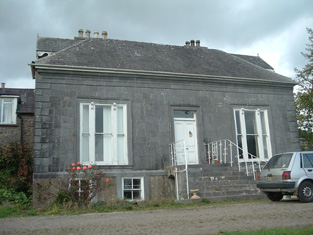
|
| Woodpark | This property belonged to the Wrixon family in the 18th century. In 1814 it was occupied by T. Callaghan. In the mid 19th century James Carmichael was in residence. He held it from the representatives of Charles D. Purcell. The buildings were valued at £11.10 shillings. Hajba writes that the Carmichaels later purchased the property from the Purcells. It is still an occupied residence. | |
| Aldworth | Hajba writes that this house was occupied by members of the Bolster family who held it from the Newmans in the late 18th century. It then became a Lombard property and passed from them to a relative, James Hunt. In the early 1850s it was occupied by James Laurence Cotter, held from James Hunt and valued at £14. This house is still occupied. Another house close by named Aldworth Lodge was also a Bolster home valued at £4+ at the time of Griffith's Valuation. A house is also extant at the latter site. |

|
| Danesfort | According to Hajba built by James Butler Stopford in the very early 19th century, replacing an earlier cottage. Stopford sold his interest to his brother-in-law, Captain Edmund Lombard a few years later. At the time of Griffith's Valuation it was occupied by the Captain's nephew, James Hunt, who held the property valued at £27.15 shillings from Christopher Crofts. In 1944 the Irish Tourist Association survey noted that it was the residence of Stopford Hunt. The house was destroyed by fire in the 1950s. | |
| Clydaville | Mrs Callaghan lived in this houses in 1814 and Mrs Sankey in 1837. Held by Hugh Delacour from Charles Haynes in the early 1850s when the house was valued at £15. The residence of the O'Connor family in the 20th century. Hajba records that the house was demolished in April 2002. | |
| Woodfort | Described in 1750 as "an handsome house, with elegant plantations" inhabited by Simeon Marshal, Surveyor General of Munster. Occupied by Ousley esq in the 1770s and 1780s, this house was the home of Richard Perry in 1814 and of T. Ware in 1837. It was valued at £30 at the time of Griffith's Valuation and still held by Thomas Weir from Charles Haynes. Later the home of the Carroll-Leahy family. In 1944 the Irish Tourist Association survey reported that it was a novitiate for the Sisters of St. Francis. This house now functions as Mount Alvernia Hospital. |

|
| Clyda | Hajba records the building of this house by Charles Haines in 1805. Occupied by Joseph Barry in 1814 and by the Reverend M. Becher in 1837. In the 1850s it was the residence of the Reverend Henry Swanzy who held it from Thomas Haynes. The buildings were valued at £24. Later the home of Lieutenant Colonel Robert D. Perry. In 1944 the Irish Tourist Association Survey noted it as the residence of Mr. Mandeville. In the late 20th century it was owed by the O'Meara family. |
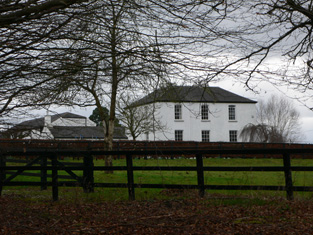
|
| Lombardstown House | The seat for many years of the Lombard family, built in the mid 18th century. In 1750 Smith refers to the house as "lately built by James Lombard". From the 1830s it was leased to the Bolster family. George Bolster held the house valued at £15 plus a demesne of 101 acres from Lady Cotter in the early 1850s. The Bolsters remained in residence until the late 19th century when they sold their interest to Henry G. Smith. His descendants continue to occupy the house (Hajba). |

|
| Fern Hill | Smith records Cornelius Townshend as resident at Betsborough circa 1750. Hajba writes that it was a Townsend property from the early 18th century and birthplace of the United Irishman, Thomas Russell, executed in 1803. The house, on the outskirts of the village of Drommahane, was originally known as Bettesborough (or Besborough) and a Magner occupied a house of this name in 1837. The Reverend Philip Townsend held the house valued at £21+ from William Magner in the early 1850s. In June 1881 the house and demesne of Fernhill were advertised for sale. Barclay Corrie was the owner, holding on a lease dated 1863 from Richard John Perry to Michael Joseph Magnier. The house was demolished in the early 20th century and a new house built on the site. |
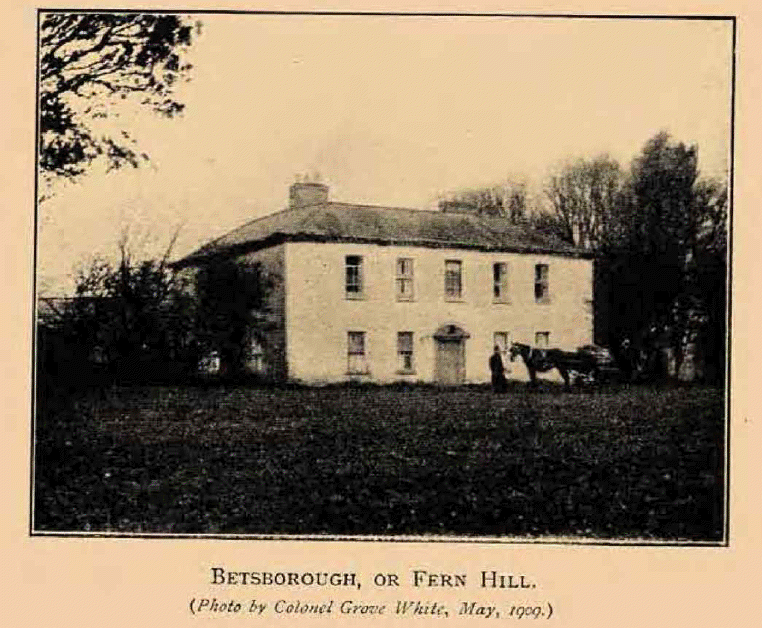
|
| Newberry Manor | This house was the seat of the Newman family in the 18th and 19th centuries. In 1786 Wilson refers to it as "Dromore, the seat of Mr. Newman". The house was valued at almost £49 in the mid 19th century and held by Adam Newman in fee. John R.B. Newman was resident in 1906. The house was burnt in June 1921 during the War of Independence when it was owned by John R. Pretyman Newman. It was rebuilt by the Newmans and then sold to the Poor Sisters of Nazareth as a nursing home. |
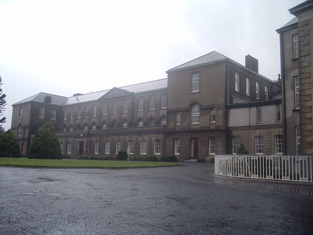
|
| Newberry House | This house was another Newman residence located in the parish of Kilshannig. In 1786 Wilson refers to Newberry as the residence of Colonel Newman, possibly the same man who was murdered in the house by his groom and an accomplice in 1816. John Newman held the property from Adam Newman at the time of Griffith's Valuation. The buildings were valued at £18.10 shillings. Post Griffith's Valuation the house became the home of the Swanzy family and it was they who built the present house incorporating the original one. The house was sold to the Footts in the 20th century. Also known as Kilshannig House. |
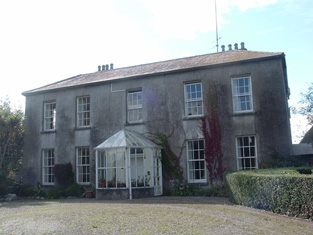
|
| Firville | A home of the Atkins family in the 18th and 19th centuries which in the early 1850s was held from John Clarke with 251 acres. Major Atkins occupied the house in 1814 and R. Atkins in 1837. Hajba writes that the Reverend Philip Atkins-Going left Firville to his unmarried daughters Charlotte and Henrietta when he died in 1861. Hussey de Burgh records Mrs Charlotte Henrietta Atkins of South Mall, Cork, owning 502 acres in the 1870s. Sold to Samuel Sheehan in 1914 this property still belonged to his descendants at the beginning of the 21st century. |
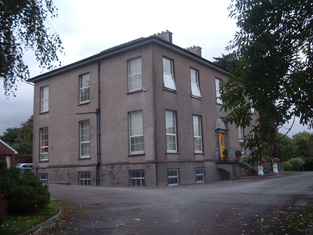
|
| Eden Hill | Situated on the Longfield estate and occupied by John Crosbie who held the house valued at £19.10 shillings from Joseph Carpenter. The Carpenter resided here from the late 18th century. Thomas Carmichael bought Carpenter's interest and advertised the sale of Eden Hill house and demesne in December 1856. Later the home of the Guerin family and in the late 20th century of the O'Callaghan family. |

|
| Millfort | This house was the home of the Foote family in the 18th century as Wilson refers to it as the seat of Mr. Foote in 1786. At the time of Griffith's Valuation the house was valued at £4.10 shillings, occupied by William Upplington and held from the representatives of George Foot. It appears to have fallen into ruin by the time the 25-inch Ordnance map was published in the 1890s and no trace remains now. | |
| Rich Hill | A house occupied by Thomas George French at the time of Griffith's Valuation, valued at £20 and held by him in fee. | |
| Burnfort | Burnfort valued at £7 was occupied by the representatives of Richard Harris Purcell at the time of Griffith's Valuation and held by them in fee. A house is still extant at the site. | |
| Ballyknockane | A house occupied by Thomas Ware in the early 1850s, valued at £11 and held in fee. It is labelled Ballyknockane House on the 25-inch edition of the Ordnance Survey map of the 1890s. It is now a ruin. | |
| Carrig Park | This early 18th century house was the residence of William Causabon in 1744. By the 1770s it was the seat of a branch of the Franks family, who continued to reside there until the beginning of the 20th century. The house was held by William Hume Franks in fee at the time of Griffith's Valuation when the buildings were valued at £45 but the valuation was reduced to £35.10 shillings by 1906. The house was burnt in the early 1920s and later demolished. |

|
| Carrigoon | Occupied by Timothy Collins in the early 1850s and held from Joseph C. Nagle. The buildings were valued at £13. In 1942 the Irish Tourist Association survey noted its association with David Nagle who was MP for Mallow in 1689. The survey mentioned the survival at that time of the stables and coach house. A small ruined portion of this property remains, in an area where extensive quarrying has taken place. | |
| Mount Nagle | An early Nagle home which by the mid 18th century appears to have become the residence of the Linehan family. Hajba records a Mrs Linehan dying there in 1755 and at the time of Griffith's Valuation Myles Linehan occupied the house. He held it from Reverend William Nash and it was valued at £10. This house is still extant and occupied. | |
| Eastly Cottage | This house was the home of Mary Anne Lombard in the mid 19th century. She held the property from the Earl of Listowel and it was valued at £20. Hajba writes that the kennels for the Duhallow Foxhounds were later located close to the cottage. Derelict for a number of years the building has been restored and was functioning as a pub in the early 21st century. | |
| Fairy Hill | At the time of Griffith's Valuation Robert De La Cour was resident at Fairy Hill, which he held from the Earl of Limerick. The buildings were valued at £36. Hajba writes that Robert lived in this house from circa 1817 to 1878. The property then passed to his niece, Miss Herrick of Shippool, who married William Nicholas Wrixon Becher in 1888 and this couple lived at Fairy Hill. Fairy Hill was in use as a nursing home at the beginning of the 21st century. | |
| Annabella House | Smith records Courthorp Clayton as resident at Anabell in 1750. The Hoares were resident at Annabelle in the late 18th century as Wilson refers to it as the seat of Mr. Hoare in 1786. The house was occupied by Richard Harris Purcell in 1814 and in 1837 and by Elizabeth Purcell at the time of Griffith's Valuation. She held the property from the Earl of Limerick and the buildings were valued at £35. This house was demolished in the latter half of the 19th century and the County Council office now stands on the site. | |
| Hawthorn Cottage | Occupied by Mrs Ellen Lombard at the time of Griffith's Valuation when the property was held from the Earl of Limerick and valued at £15. |

|
| Sunny Hill | In 1786 Wilson refers to a seat of Mr. Cotter in the town of Mallow. James Delacour, second son of Robert Delacour of Beare Forest, was residing at Sunny Hill in the mid 19th century. He held the property from Henry Braddle and it was valued at £36. He was still described as "of Sunny Hill" in 1886. The house became a rectory for about fifty years in the 20th century. In 1942 the Irish Tourist Association Survey referred to it as "a fine well kept residence built by J. Carmichael". It is now a private residence named Duarrigle. | |
| Garland Cottage | Occupied by Anne Davis and held from Henry Braddle at the time of Griffith's Valuation. The buildings were valued at £25. Hajba writes that it was the home of the Davis family for most of the 19th century. Bought by James John Dudley in the 20th century, father in law to Erskine Childers, President of Ireland. |
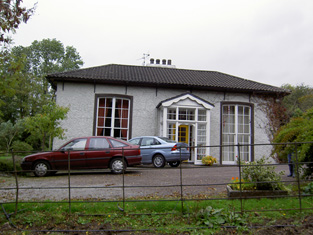
|
| Ballyellis | A home of a branch of the Norcott family in the 18th century. William Wrixon is given as the proprietor of Ballyellis, Mallow, in 1814. In 1837 Lewis refers to Bally Ellis as "formerly the residence of Lord Ennismore and now of A. G. Creagh". By the time of Griffith's Valuation Kilner Brazier held the property in fee. The buildings were valued at £60. Sold to Mr McCormick circa late 1870s and then to Nigel Baring of Baring's Bank in the 1890s. Baring was Master of the Duhallow Foxhounds for a time and changed the name of the house to Avondhu. Later bought by the De La Salle Order of Brothers. Sold by them in 1974 and demolished. | |
| Ballyviniter | A Stawell residence in the 18th and 19th centuries, occupied by George C. Stawell in the early 1850s, when the buildings were valued at £15. Stawell held the property in fee. The original house is not extant. | |
| Ballygarrett | Referred to in 1750 by Smith as the house of John Norcott. Leased by Sir James Cotter at the end of the 18th century to Major Stephen Kell. The Major's son, John, was occupying the house in the early 1850s, when it was valued at £18 and held from Adam Newman. Later the property of the Creaghs. This house no longer exists. | |
| Bearforest | Named after Richard Beare who held this land in the early 18th century, the house was built in 1807-1808 by Robert Delacour, a partner in the Delacour bank of Mallow. Townsend writes that it was designed by Richard Morrison. Delacour was living in the house in 1814 but had vacated it by 1837. At the time of Griffith's Valuation it was occupied by John Hugh Bainbridge who held it from James Murphy. The buildings were valued at £70. Bence Jones records the Purdon Coote family as later owners. The house was burnt in June 1921 during the War of Independence when it was the residence of Maj. Charles Purdon Coote but was rebuilt. |

|
| Carhookeal | This house was also known as Mount Watts and Castleview. It was the home of the Williamson family for most of the 19th century. Occupied by Arthur Williamson in the early 1850s and held by him from Richard Barrett. The buildings were valued at £22. Occupied by Colonel R. F. Williamson in 1906. The Irish Tourist Association Survey in 1942 noted that it used to have a third storey and that it was then unoccupied. The National Inventory of Architectural Heritage notes its use as a GAA clubhouse in this century. |
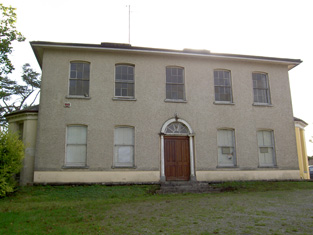
|
| Summerhill | Originally a Stawell home, Wilson refers to Summer-Hill as the seat of Mr. Stawell in 1786. It was occupied by John Stawell in the early 1850s and held from John Guinness. The buildings were valued at £18.10 shillings. Sold in 1853 to Major General Usher Williamson. The house remained in Williamson possession until the 20th century. The Irish Tourist Association Survey in 1942 recorded that it had been purchased and was resided in, by the Buckley family at that time. It is still a family residence. |
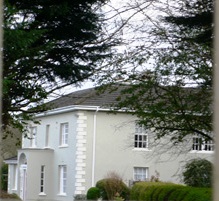
|
| Mallow Castle | Originally a Fitzgerald stronghold, the Jephsons lived at Mallow from the early 17th century until the late 20th century. The castle was abandoned in the late 17th century and the stables converted into a dwelling house. This building was extended by the Jephsons in the 18th century and Wilson, writing in 1786, states "the seat of Denham Jephson which is greatly deserving of the notice of a traveller". Lewis refers to the rebuilding of the castle in 1837 by Sir Denham Jephson. At the time of Griffith's Valuation the buildings were valued at £80. Slater refers to it as the residence of Miss Norreys in 1894. In 1942 the Irish Tourist Association Survey noted that the building had a fine library. Mallow Castle was sold by the Jephsons in 1984. |
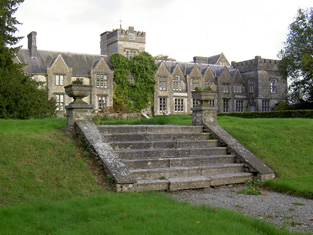
|
| Cortigan | A house on the Jephson estate, probably used as a dower house or agent's residence. At the time of Griffith's Valuation the buildings were valued at £10 and Sir C. D. Jephson Norreys is recorded as occupier. This house was not in use at the end of the 20th century. | |
| Sunnyside | Richard Barrett occupied a house valued at £15 which he held in fee. Hajba writes that Charles H. Haines built this house named Sunnyside in 1862. He was leasing the townland from Richard Barrett. The National Inventory of Architectural Heritage dates the house circa 1820. The home of the Cashman family in the 20th century. |

|
| Gooldshill | At the time of Griffith's Valuation Henry Goold was leasing land in the parish of Mallow to Michael Jones. Gooldshill was occupied by Edmund Roche who held the house and 7 acres from Michael Jones. The buildings were valued at £12. Hajba writes that this house is now derelict. | |
| Quartertown House | A Dillon residence in the mid 18th century, passed by marriage to the Crokers. Wilson, writing in 1786, refers to it as the seat of Mr. Dillon. The Crokers also owned the mills nearby. Occupied by John D. Croker at the time of Griffith's Valuation and held by him in fee. The buildings were valued at £40. Later bought by the Webb family. In 1942 the Irish Tourist Association Survey mentioned that it was then let to the Nazareth Sisters. It is now in ruins. | |
| Wilton | Valued at £15 at the time of Griffith's Valuation and held by James Welply from John D. Croker. Later occupied by Bradys, Westropps and Webbs, still extant. |
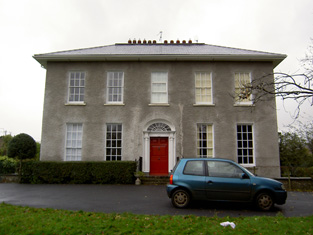
|
| Ballymagooly | The home of the Franks family in the mid 18th century. John Nash was living here in the late 18th century. In 1790 his daughter Catherine married Robert Courtenay of Ballyedmond and the property passed to the Courtneys. Ballymagooly was occupied by the Courtneys in 1814 and in 1837. Held by John Courtney in fee at the time of Griffith's Valuation when the buildings were valued at £35. Also known as The Garrison the house was burnt and the stableblock converted into a residence in 1955. |

|
| Carrigoon Cottage | A house valued at £12 and located on the Franks estate in the mid 19th century when it was occupied by William Quane and held from William H. Franks. Buildings are still extant at the site. | |
| Carrigoon House | A Stawell home in 1750 and the home of Michael Nash in the latter part of the 18th century. Occupied by James Curtin in 1814 and by William H. Franks at the time of Griffith's Valuation. It was held by Franks in fee and valued at £15. A few ruins remain of this house. | |
| Rockforest Lodge | This house was the residence of Pierse Creagh in 1837. At the time of Griffith's Valuation Henry O. Seavers occupied this house, valued at £24 and held by him in fee. This house is still inhabited. In 2010 it was offered for sale. see http://www.michaelhdaniels.com/index.cfm?fuseaction=propsearch |

|
| Rockforest | The seat of the Cotter family from the mid 18th century and occupied by them until the 20th century. Wilson, writing in 1786, describes it as "a most beautiful improvment, highly wooded, situated on the Blackwater, the seat of James Laurence Cotter". Occupied by Mrs J.R. Cotter, sister-in-law of the 3rd Baronet, in the mid 19th century when the buildings were valued at £18. By 1906 its value had risen to £38.15 shillings. Only half of the house now survives, the Irish Tourist Association Survey of 1942 noting that "the greater part of the building had been knocked down". For sale in 2012 through Savills. |
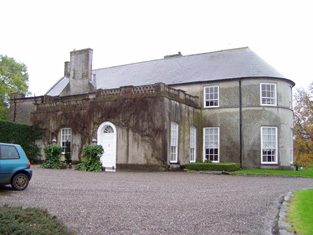
|
| Killetra [Mount Ruby] | Hajba writes that this house, originally known as Mount Ruby, derived its name from the Ruby family who lived there in the mid 18th century. Thomas Flynn, Justice of the Peace for Cork in 1793, married a Ruby. In 1786 Wilson refers to "Kilottery" as the seat of Mr. McCarthy. The house had a number of occupants, including John N. Wrixon, before it became the residence of Michael Jones at the time of Griffith's Valuation. It was valued at £18 and held from the representatives of Thomas Flynn. This house is still a family residence. | |
| Beechmount | At the time of Griffith's Valuation Sackville Hamilton occupied this house, valued at £22, which he held from James Lysaght, third son of William Lysaght of Fort William and Catherine Royse. James's son, William Lysaght, later lived in this house, which is still occupied. Sold to the Verlings in 1870. | |
| Dromrahan | A mansion house valued at £20 is recorded at Dromrahan in 1906. Matthew H. Franks was the occupier. This house was built in the second half of the 19th century and is not recorded in Griffith's Valuation. A large complex of buildings at the site is labelled Dromrahan House on the 25-inch Ordnance Survey map of the 1890s. It is still extant and occupied. |
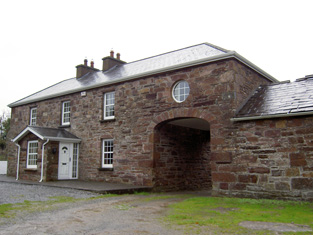
|
| Mount Ruby | In 1942 the Irish Tourist Association Survey noted a house known as Mount Ruby which had been built by Arthur Gethin Creagh, c.1903-04. Its title echoes the name of another house in the same townland which has been known since the eighteenth century as Killetra House but which was originally called Mount Ruby. The twentieth century house, built in the Arts-and-Crafts style, is also still extant and occupied. |
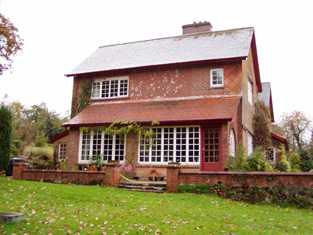
|

